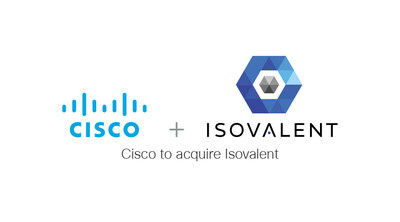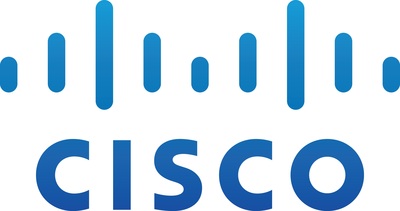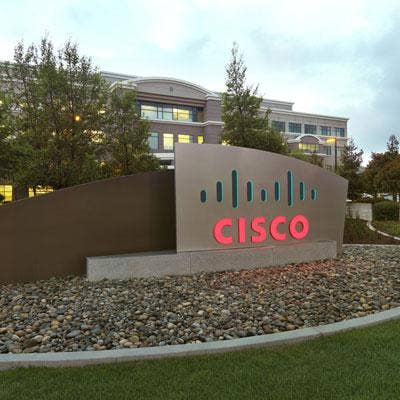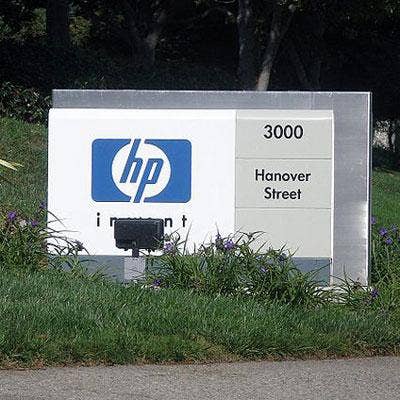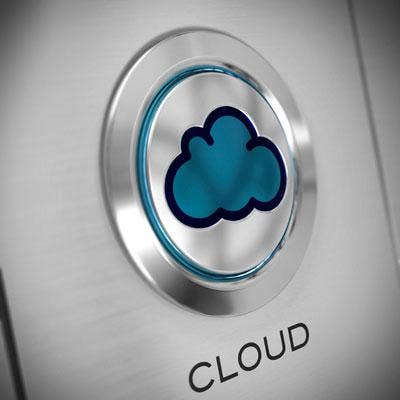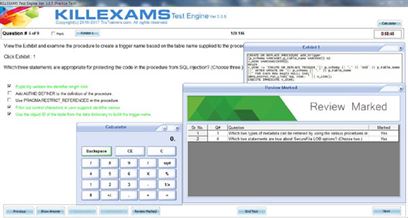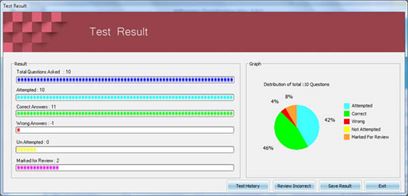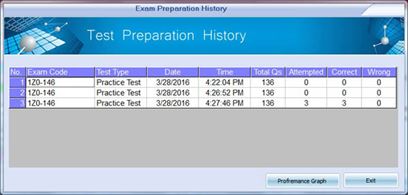Cisco Data Center Unified Computing Infrastructure Design Exam Braindumps
Killexams.com 500-901 Exam Braindumps contain complete question pool, updated in April 2024 including VCE exam simulator that will help you get high marks in the exam. All these 500-901 exam questions are verified by killexams certified professionals and backed by 100% money back guarantee.
500-901 download - Cisco Data Center Unified Computing Infrastructure Design Updated: 2024 | ||||||||
| Precisely same 500-901 dumps questions as in real test, WTF! | ||||||||
 |
||||||||
|
||||||||
|
Exam Code: 500-901 Cisco Data Center Unified Computing Infrastructure Design download January 2024 by Killexams.com team | ||||||||
500-901 Cisco Data Center Unified Computing Infrastructure Design Exam Details: - Number of Questions: The Cisco Data Center Unified Computing Infrastructure Design (DCICN) test typically consists of around 65 to 75 multiple-choice and multiple-answer questions. The exact number of questions may vary. - Time: Candidates are given 90 minutes to complete the exam. It is important to manage time effectively to ensure all questions are answered within the allocated time. Course Outline: The Cisco DCICN test focuses on validating the knowledge and skills required to design Cisco Data Center Unified Computing Infrastructure solutions. The test covers various courses related to data center infrastructure design. While the specific course outline may vary, the test generally covers the following key areas: 1. Data Center Compute: - Designing compute platforms for data centers. - Understanding different compute technologies, such as blade servers, rack servers, and modular servers. - Designing high-availability compute solutions. 2. Data Center Networking: - Designing network infrastructure for data centers. - Understanding data center networking technologies, such as LAN, WAN, and fabric networking. - Designing network redundancy and high availability. 3. Data Center Storage: - Designing storage infrastructure for data centers. - Understanding different storage technologies, such as SAN, NAS, and object storage. - Designing storage redundancy and high availability. 4. Data Center Virtualization: - Designing virtualization solutions for data centers. - Understanding virtualization technologies, such as server virtualization and network virtualization. - Designing highly available and scalable virtualized environments. 5. Data Center Automation and Orchestration: - Designing automation and orchestration solutions for data centers. - Understanding automation technologies, such as scripts and APIs. - Designing self-service portals and resource provisioning workflows. Exam Objectives: The objectives of the Cisco DCICN test typically include: - Assessing the candidate's understanding of data center compute technologies and their design considerations. - Evaluating the candidate's knowledge of data center networking technologies and their design principles. - Testing the candidate's proficiency in data center storage design and high availability. - Assessing the candidate's understanding of data center virtualization technologies and their design considerations. - Evaluating the candidate's knowledge of data center automation and orchestration solutions. Exam Syllabus: The specific test syllabus for the Cisco Data Center Unified Computing Infrastructure Design test may vary, but it generally includes the following topics: 1. Compute Design: - Compute technologies - High-availability compute solutions 2. Network Design: - Data center networking technologies - Network redundancy and high availability 3. Storage Design: - Storage technologies - Storage redundancy and high availability 4. Virtualization Design: - Virtualization technologies - Highly available and scalable virtualized environments 5. Automation and Orchestration Design: - Automation technologies - Self-service portals and resource provisioning workflows | ||||||||
| Cisco Data Center Unified Computing Infrastructure Design Cisco Infrastructure download | ||||||||
Other Cisco exams010-151 Cisco Certified Technician (CCT) for Data Center500-275 Securing Cisco Networks with Sourcefire FireAMP Endpoints CICSP Cisco IronPort Certified Security Professional 600-455 Deploying Cisco Unified Contact Center Enterprise (DUCCE) 500-210 SP Optical Technology Field Engineer Representative 500-052 Deploying Cisco Unified Contact Center Express (UCCXD) 500-651 Security Architecture for Systems Engineer (SASE) 500-701 Cisco Video Infrastructure Design (VID) 500-301 Cisco Cloud Collaboration Solutions 500-551 Cisco Networking: On-Premise and Cloud Solutions 700-020 Cisco Video Sales Essentials 500-710 Cisco Video Infrastructure Implementation 700-105 Cisco Midsize Collaboration Solutions for Account Managers 500-325 Cisco Collaboration Servers and Appliances 500-490 Designing Cisco Enterprise Networks 500-470 Cisco Enterprise Networks SDA, SDWAN and ISE test for System Engineers 500-901 Cisco Data Center Unified Computing Infrastructure Design 500-230 Cisco Service Provider Routing Field Engineer 700-150 Introduction to Cisco Sales 700-651 Cisco Collaboration Architecture Sales Essentials 700-751 Cisco SMB Product and Positioning Technical Overview (SMBSE) 300-410 Implementing Cisco Enterprise Advanced Routing and Services (ENARSI) 300-415 Implementing Cisco SD-WAN Solutions (ENSDWI) 300-420 Designing Cisco Enterprise Networks (ENSLD) 300-425 Designing Cisco Enterprise Wireless Networks (ENWLSD) 300-430 Implementing Cisco Enterprise Wireless Networks (ENWLSI) 2023 300-435 Automating Cisco Enterprise Solutions (ENAUTO) 300-510 Implementing Cisco Service Provider Advanced Routing Solutions (SPRI) 300-610 Designing Cisco Data Center Infrastructure (DCID) 300-615 Troubleshooting Cisco Data Center Infrastructure (DCIT) 300-620 Implementing Cisco Application Centric Infrastructure (DCACI) 300-635 Automating Cisco Data Center Solutions (DCAUTO) 300-810 Implementing Cisco Collaboration Applications (CLICA) 300-815 Implementing Cisco Advanced Call Control and Mobility Services (CLACCM) - CCNP 300-910 Implementing DevOps Solutions and Practices using Cisco Platforms (DEVOPS) 300-920 Developing Applications for Cisco Webex and Webex Devices (DEVWBX) 350-401 Implementing Cisco Enterprise Network Core Technologies (ENCOR) 350-501 Implementing and Operating Cisco Service Provider Network Core Technologies (SPCOR) 350-601 Implementing Cisco Data Center Core Technologies (DCCOR) 350-701 Implementing and Operating Cisco Security Core Technologies (SCOR) 350-801 Implementing Cisco Collaboration Core Technologies (CLCOR) 350-901 Developing Applications using Cisco Core Platforms and APIs (DEVCOR) 500-215 SP Mobility Technology Systems Engineer Representative 200-301 Cisco Certified Network Associate - CCNA 2023 100-490 Cisco Certified Technician Routing & Switching (RSTECH) 200-201 Understanding Cisco Cybersecurity Operations Fundamentals (CBROPS) 200-901 DevNet Associate (DEVASC) 300-535 Automating Cisco Service Provider Solutions (SPAUTO) 300-710 Securing Networks with Cisco Firepower 300-715 Implementing and Configuring Cisco Identity Services Engine 300-720 Securing Email with Cisco Email Security Appliance 300-725 Securing the Web with Cisco Web Security Appliance (SWSA) 300-730 Implementing Secure Solutions with Virtual Private Networks 300-735 Automating Cisco Security Solutions (SAUTO) 300-820 Implementing Cisco Collaboration Cloud and Edge Solutions 300-835 Automating Cisco Collaboration Solutions (CLAUTO) 500-440 Designing Cisco Unified Contact Center Enterprise (UCCED) 600-660 Implementing Cisco Application Centric Infrastructure - Advanced 300-515 Implementing Cisco Service Provider VPN Services (SPVI) 300-915 Developing Solutions Using Cisco IoT and Edge Platforms (DEVIOT) 300-215 Conducting Forensic Analysis and Incident Response Using Cisco CyberOps Technologies (CBRFIR) 350-201 Performing CyberOps Using Core Security Technologies (CBRCOR) 500-240 Cisco Mobile Backhaul for Field Engineers (CMBFE) 700-765 Cisco Security Architecture for System Engineers 820-605 Cisco Customer Success Manager (CSM) 700-805 Cisco Renewals Manager (CRM) 500-452 Cisco Enterprise Networks Core and WAN (ENCWE) 700-760 Cisco Security Architecture for Account Managers 700-680 Cisco Collaboration SaaS Authorization (CSaaS) 700-846 Cisco IoT Advantage for Account Managers (IOTAAM)? 500-451 Cisco Enterprise Networks Unified Access test (ENUAE) 500-920 Cisco Data Center Unified Computing Infrastructure Troubleshooting (DCITUC) 500-220 Cisco Meraki Solutions Specialist (ECMS) 500-560 Cisco Networking: On-Premise and Cloud Solutions 500-445 Cisco Contact Center Enterprise Chat and Email (CCECE) 500-442 Administering Cisco Contact Center Enterprise (CCEA) 500-265 Cisco Advanced Security Architecture System Engineer (ASASE) 700-755 Small Business Technical Overview (SBTO) 500-444 Cisco Contact Center Enterprise Implementation and Troubleshooting (CCEIT) 500-443 Advanced Administration and Reporting of Contact Center Enterprise (CCEAAR) | ||||||||
| Necessary thing in passing 500-901 test is to have great material for test preparation. Your success in 500-901 test depends on accuracy and validity of 500-901 test material. That accurate 500-901 test dumps can be downloaded from killexams.com. Here you have updated 500-901 dumps questions obrained from real 500-901 tests and vce test simulator for you to practice your exam. This will ensure your success in real 500-901 test at high scores | ||||||||
| 500-901 Dumps 500-901 Braindumps 500-901 Real Questions 500-901 Practice Test 500-901 dumps free Cisco 500-901 Cisco Data Center Unified Computing Infrastructure Design http://killexams.com/pass4sure/exam-detail/500-901 Question: 189 Which layer of the OSI model controls the reliability of communications between network devices using flow control, sequencing and acknowledgments? A. Physical B. Data-link C. Transport D. Network Answer: C Explanation: Question: 190 Which transport layer protocol provides best-effort delivery service with no acknowledgment receipt required? A. HTTP B. IP C. TCP D. Telnet E. UDP Answer: E Explanation: UDP provides a connectionless datagram service that offers best-effort delivery, which means that UDP does not ensure delivery or verify sequencing for any datagrams. A source host that needs reliable communication must use either TCP or a program that provides its own sequencing and acknowledgment services. Question: 191 Refer to the exhibit. A network device needs to be installed in the place of the icon labeled Network Device to accommodate a leased line attachment to the Internet. Which network device and interface configuration meets the minimum requirements for this installation? A. a router with two Ethernet interfaces B. a switch with two Ethernet interfaces C. a router with one Ethernet and one serial interface D. a switch with one Ethernet and one serial interface E. a router with one Ethernet and one modem interface Answer: C Explanation: Only a router can terminate a leased line attachment access circuit, and only a router can connect two different IP networks. Here, we will need a router with two interfaces, one serial connection for the line attachment and one Ethernet interface to connect to the switch on the LAN. Question: 192 Refer to the exhibit. Mary is sending an instant message to Robert. The message will be broken into a series of packets that will traverse all network devices. What addresses will populate these packets as they are forwarded from Router1 to Router2? A. Option A B. Option B C. Option C D. Option D E. Option E Answer: B Explanation: The Source and Destination IP address is not going to change. Host 1 IP address will stay as being the source IP and the Host 2 IP address will stay the destination IP address. Those two are not going to change. For the MAC address it is going to change each time it goes from one hope to another. (Except switches… they don’t change anything) Frame leaving HOST 1 is going to have a source MAC of Host 1 and a destination MAC of Router 1. Router 1 is going to strip that info off and then will make the source MAC address of Router1’s exiting interface, and making Router2’s interface as the destination MAC address. Then the same will happen… Router2 is going to change the source/destination info to the source MAC being the Router2 interface that it is going out, and the destination will be Host2’s MAC address. Question: 193 Refer to the exhibit. As packets travel from Mary to Robert, which three devices will use the destination MAC address of the packet to determine a forwarding path? (Choose three.) A. Hub1 B. Switch1 C. Router1 D. Switch2 E. Router2 F. Switch3 Answer: BDF Explanation: Switches use the destination MAC address information for forwarding traffic, while routers use the destination IP address information. Local Area Networks employ Layer 2 Switches and Bridges to forward and filter network traffic. Switches and Bridges operate at the Data Link Layer of the Open System Interconnect Model (OSI). Since Switches and Bridges operate at the Layer 2 they operate more intelligently than hubs, which work at Layer 1 (Physical Layer) of the OSI. Because the switches and bridges are able to listen to the traffic on the wire to examine the source and destination MAC address. Being able to listen to the traffic also allows the switches and bridges to compile a MAC address table to better filter and forward network traffic. To accomplish the above functions switches and bridges carry out the following tasks: MAC address learning by a switch or a bridge is accomplished by the same method. The switch or bridge listens to each device connected to each of its ports and scan the incoming frame for the source MAC address. This creates a MAC address to port map that is cataloged in the switches/bridge MAC database. Another name for the MAC address table is content addressable memory or CAM table. When a switch or bridge is listening to the network traffic, it receives each frame and compares it to the MAC address table. By checking the MAC table the switch/ bridge are able o determine which port the frame came in on. If the frame is on the MAC table the frame is filtered or transmitted on only that port. If the switch determines that the frame is not on the MAC table, the frame is forwarded out to all ports except the incoming port. Question: 194 Refer to the exhibit. The host in Kiev sends a request for an HTML document to the server in Minsk. What will be the source IP address of the packet as it leaves the Kiev router? A. 10.1.0.1 B. 10.1.0.5 C. 10.1.0.6 D. 10.1.0.14 E. 10.1.1.16 F. 10.1.2.8 Answer: E Although the source and destination MAC address will change as a packet traverses a network, the source and destination IP address will not unless network address translation (NAT) is being done, which is not the case here. Question: 195 Which network device functions only at Layer 1 of the OSI model? A. Option A B. Option B C. Option C D. Option D E. Option E Answer: B Explanation: Most hubs are amplifying the electrical signal; therefore, they are really repeaters with several ports. Hubs and repeaters are Layer 1 (physical layer) devices. Question: 196 Refer to the exhibit. HostX is transferring a file to the FTP server. Point A represents the frame as it goes toward the Toronto router. What will the Layer 2 destination address be at this point? A. abcd.1123.0045 B. 192.168.7.17 C. aabb.5555.2222 D. 192.168.1.1 E. abcd.2246.0035 Answer: E Explanation: For packets destined to a host on another IP network, the destination MAC address will be the LAN interface of the router. Since the FTP server lies on a different network, the host will know to send the frame to its default gateway, which is Toronto. Question: 197 Refer to the exhibit. If host A sends an IP packet to host B, what will the source physical address be in the frame when it reaches host B? A. 10.168.10.99 B. 10.168.11.88 C. A1:A1:A1:A1:A1:A1 D. B2:B2:B2:B2:B2:B2 E. C3:C3:C3:C3:C3:C3 F. D4:D4:D4:D4:D4:D4 Answer: E Explanation: When packets transfer from one host to another across a routed segment, the source IP address always remains the same source IP address, and the source physical (MAC) address will be the existing routerâs interface address. Similarly, the destination IP address always remains the same and the destination physical (MAC) address is the destination routerâs interface address. Question: 198 Refer to the exhibit. If the hubs in the graphic were replaced by switches, what would be virtually eliminated? A. broadcast domains B. repeater domains C. Ethernet collisions D. signal amplification E. Ethernet broadcasts Answer: C Explanation: Modern wired networks use a network switch to eliminate collisions. By connecting each device directly to a port on the switch, either each port on a switch becomes its own collision domain (in the case of half duplex links) or the possibility of collisions is eliminated entirely in the case of full duplex links. Question: 199 Which protocol uses a connection-oriented service to deliver files between end systems? A. TFTP B. DNS C. FTP D. SNMP E. RIP Answer: C Explanation: TCP is an example of a connection-oriented protocol. It requires a logical connection to be established between the two processes before data is exchanged. The connection must be maintained during the entire time that communication is taking place, then released afterwards. The process is much like a telephone call, where a virtual circuit is established–the caller must know the person’s telephone number and the phone must be answered–before the message can be delivered. TCP/IP is also a connection-oriented transport with orderly release. With orderly release, any data remaining in the buffer is sent before the connection is terminated. The release is accomplished in a three-way handshake between client and server processes. The connection-oriented protocols in the OSI protocol suite, on the other hand, do not support orderly release. Applications perform any handshake necessary for ensuring orderly release. Examples of services that use connection-oriented transport services are telnet, rlogin, and ftp. Question: 200 Which layer of the TCP/IP stack combines the OSI model physical and data link layers? A. Internet layer B. transport layer C. application layer D. network access layer Answer: D Explanation: The Internet Protocol Suite, TCP/IP, is a suite of protocols used for communication over the internet. The TCP/ IP model was created after the OSI 7 layer model for two major reasons. First, the foundation of the Internet was built using the TCP/IP suite and through the spread of the World Wide Web and Internet, TCP/IP has been preferred. Second, a project researched by the Department of Defense (DOD) consisted of creating the TCP/IP protocols. The DOD’s goal was to bring international standards which could not be met by the OSI model. Since the DOD was the largest software consumer and they preferred the TCP/IP suite, most vendors used this model rather than the OSI. Below is a side by side comparison of the TCP/IP and OSI models. Question: 201 Which OSI layer header contains the address of a destination host that is on another network? A. application B. session C. transport D. network E. data link F. physical Answer: D Explanation: Only network address contains this information. To transmit the packets the sender uses network address and datalink address. But the layer 2 address represents just the address of the next hop device on the way to the sender. It is changed on each hop. Network address remains the same. Question: 202 DRAG DROP On the left are various network protocols. On the right are the layers of the TCP/IP model. Assuming a reliable connection is required, move the protocols on the left to the TCP/IP layers on the right to show the proper encapsulation for an email message sent by a host on a LAN. (Not all options are used.) Select and Place: Answer: For More exams visit https://killexams.com/vendors-exam-list Kill your test at First Attempt....Guaranteed! | ||||||||
|
3d renderer illustration. Airport board with past, present and future words. Time concept. gettyAt about this same time last year, I published my predictions for three trends in 5G and security. I thought it might be fun to revisit them, measure my success and provide forward-looking insights for 2024. I often joke that meteorologists have the best jobs, accurately predicting the weather only half the time yet still managing to stay employed. As a technology analyst, I’m thankful I don't have that same job pressure—but let's dig in! #1: Fixed wireless access achieves terminal velocity; IoT security goes verticalBy all measures, my prediction about broad 5G fixed wireless access service adoption was on target. According to an article published by Fierce Wireless late last year, nearly 1 million FWA subscribers have been added over the past five calendar quarters. That’s an impressive number. Both T-Mobile and Verizon continue to grow FWA’s subscriber footprint stateside. T-Mobile is quickly approaching 5 million FWA subscribers, and with a drastically improved service anchored by its C-Band spectrum build-out, Verizon is closing in on 3 million subscribers. AT&T also joined the consumer 5G FWA party, launching its Internet Air service in a limited number of markets in late August last year. Beyond the U.S., there are scores of mobile network operators with plans to deploy 5G FWA services. Most notably, in India Reliance Jio plans to market its JioAirFiber offering with multiple download speed variants to over 200 million subscriber prospects across eight cities. My prediction about the growth of IoT security tailored to operational technology environments was also accurate. In addition to Palo Alto Networks, a host of other companies, including Cisco, Entrust, Forescout, Fortinet, AWS, Azure and Google, are all helping enterprises secure workloads and use cases that leverage both on-premises and cloud infrastructure. Manufacturing automation, transportation and logistics, supply chain and remote asset monitoring are a handful of applications benefiting from the focus on IoT security services. #2: Mobile network slicing becomes a reality; Bad actors target the hybrid workforceMy prediction on the rollout of mobile network slicing is a swing and a miss. I expected mobile network operators to be more aggressive on 5G Standalone deployments in 2023 (a necessary pre-requisite for network slicing). The reality is that many were still focused on upgrading radio access network infrastructure and deploying mid-band spectrum to ensure the best balance of propagation and performance. However, signs point to 2024 as the year of 5G Standalone, given the slowdown in RAN spending witnessed last year and the progress made by AT&T, Verizon and other global carriers in deploying greater 5G network coverage. By contrast, my security prediction that centered on hybrid workforce attacks landed squarely. Forcepoint published an insightful article on this Topic at the end of last year. It highlights three key challenges that include securing cloud-based and internal private web applications, ensuring that BYOD strategies do not increase the likelihood of zero-day or phishing attacks and maintaining a data security posture that comprehends egress across email, cloud, web, networks and endpoints. SD-WAN solutions infusing security, often called secure access service edge, have great potential in addressing hybrid workforce security. The good news is that the SASE market is highly competitive, and solid offerings from Cisco, Fortinet, HPE Aruba Networking, Juniper, Netskope, Palo Alto Networks and Zscaler supply customers a wide array of choices that deliver the scale required for the new enterprise work-from-anywhere micro-branch. #3: Open RAN market consolidates; The zero trust whitewash rolls onMarket players didn’t necessarily consolidate in 2023. Still, Open RAN experienced a watershed moment in December with AT&T’s announcement with Ericsson to move most of its network traffic to open standards-based infrastructure by 2026. Surprisingly, in speaking with AT&T executives before the announcement, I discovered that the company’s aggressive move to Open RAN is less about cost containment and more about flexibility and innovation. That makes sense because Open RAN enables programmability, but I also speculate that the move aligns with the U.S. federal government's desire to domesticate the telecom supply chain. To this end, AT&T will also work with Dell Technologies and Intel to make its Open RAN deployment a reality. My security prediction that the zero-trust industry whitewash would continue into 2023 was spot on. Last year, nearly every security solution provider claimed capability in zero trust. However, zero trust did continue its maturity cycle through enhancements to existing offerings. From my perspective, the scrutiny paid to zero trust has ended up being a positive phenomenon. It has educated enterprises on the National Institute of Standards and Technology cybersecurity framework and the importance of universal zero-trust network access solutions, given the nature of modern hybrid work. The good news is that the number of solutions is now abundant, and many infrastructure providers are blending both connectivity and security functions to deliver management simplicity, higher levels of network observability and, most importantly, hardened security. Wrapping upTime flies, and it’s unbelievable that 2023 has passed by so quickly. The new year should deliver some incredible 5G mobile network maturity and security milestones. 5G FWA will continue its rocketship ascent, network slicing should become a reality and unlock a host of mobile use cases and Open RAN could finally enjoy broader adoption, moving from proof of concept and greenfield to brownfield mobile network deployment. From a security standpoint, private cellular network adoption should continue to “feed the need” for IoT security, SASE is well positioned to address hybrid workforce threats and ZTNA offerings will mature to address the needs of small to large businesses. I can hardly wait to see what develops across both telecom and cybersecurity over the next 12 months. Moor Insights & Strategy provides or has provided paid services to technology companies, like all tech industry research and analyst firms. These services include research, analysis, advising, consulting, benchmarking, acquisition matchmaking and video and speaking sponsorships. Of the companies mentioned in this article, Moor Insights & Strategy has had or currently has paid business relationships with AT&T, AWS, Cisco Systems, Dell Technologies, Ericsson, Fortinet, Google, HPE Aruba Networking, Intel, Juniper Networks, Microsoft, Netskope, Palo Alto Networks, T-Mobile, Verizon and Zscaler. News Summary:
SAN JOSE, Calif., Dec. 21, 2023 /PRNewswire/ -- Cisco (NASDAQ: CSCO) today announced the intent to acquire Isovalent, a leader in open source cloud native networking and security, to bolster its secure networking capabilities across public clouds. The acquisition of Isovalent will build on the Cisco Security Cloud vision, an AI-driven, cloud delivered, integrated security platform for organizations of any shape and size. The Cisco Security Cloud enables customers to abstract security controls from multicloud infrastructure to provide advanced protection against emerging threats across any cloud, application or workload. "Together with Isovalent, Cisco will build on the open source power of Cilium to create a truly unique multicloud security and networking capability to help customers simplify and accelerate their digital transformation journeys," said Jeetu Patel, executive vice president and general manager of Security and Collaboration at Cisco. "Imagine in today's distributed environment - of applications, virtual machines, containers and cloud assets - having security controls with total visibility, without hindering networking and application performance. The combination of Cisco and Isovalent will make this a reality." Isovalent's team is a major contributor to the open source technology eBPF, and has led the development of Cilium, the leading cloud native solution for networking and security. eBPF provides unmatched visibility into the inner workings of the operating system - an ideal interface for building security systems that can protect a workload while it runs. Cilium provides IT and platform engineering teams with powerful networking capabilities and unparalleled visibility into the behavior and communication of cloud native applications, enabling seamless policy definition of software-defined networks. Isovalent has also recently introduced:
Cisco intends to continue offering and building on Isovalent's slate of innovations for customers, including Isovalent Enterprise. "Cisco is committed to nurturing, investing in, and contributing to the eBPF and Cilium open source communities," said Stephen Augustus, Head of Open Source at Cisco. "Isovalent's team will join Cisco's deep bench of open source governance and technical leadership to solve complex cloud native, security, and networking challenges. Their knowledge will accelerate innovation across the business and help further strengthen the Cisco Security Cloud platform to meet the growing demands of our customers." Isovalent holds leadership positions in the Cloud Native Computing Foundation and eBPF Foundation, in addition to upstream software contributions, and this acquisition strengthens Cisco's role in supporting the open source ecosystem. Together as leaders in networking and security, Cisco and Isovalent will build solutions powered by eBPF technology that aim to solve the challenge of protecting workloads no matter where they reside. Cisco is committed to Cilium and Tetragon as open source projects and intends to create an independent advisory board to help steer Cisco's contributions to these important efforts in a way that is aligned with the needs of the open source community. The Isovalent team will join the Cisco Security Business Group once the acquisition closes, which is expected in the third quarter of fiscal year 2024. Additional Resources  About Cisco Cisco and the Cisco logo are trademarks or registered trademarks of Cisco and/or its affiliates in the U.S. and other countries. A listing of Cisco's trademarks can be found at www.cisco.com/go/trademarks. Third-party trademarks mentioned are the property of their respective owners. The use of the word partner does not imply a partnership relationship between Cisco and any other company. Â
SOURCE Cisco Cisco’s two SD-WAN solutions, one of which is powered by Viptela, is helping the tech giant take a big chunk of market share in the increasingly crowded SD-WAN market.
Cisco Systems came out ahead of the pack in the $1.4 billion SD-WAN infrastructure market last year, according to market research firm IDC. The latest IDC market share report ranks Cisco in first place for 2018 market share worldwide for SD-WAN Infrastructure, which was up 64.0 percent last year. Cisco, according to the report, captured 46.4 percent of the total SD-WAN market last year or $637.7 million, an increase of 55.4 percent year-over-year. Trailing Cisco was the "rest of market" segment, which included a mix of emerging SD-WAN players such as CloudGenix, Fortinet, and Versa Networks. The “rest of market” segment captured 20.8 percent of the SD-WAN market in 2018 or $285.9 million, up 86.1 percent year-over-year. [Related: 6 Hot SD-WAN Technologies To Follow In 2019] Rohit Mehra, vice president of network infrastructure for IDC and one of the report's authors, told CRN that Cisco's significant share in the SD-WAN space is thanks to its extensive routing portfolio it uses in SD-WAN deployments. Cisco is also bringing two SD-WAN solutions to the table: its flagship SD-WAN platform powered by technology it acquired from Viptela in August 2017 and a Meraki SD-WAN offering. "Additionally, [Cisco] is able to leverage their large installed base of enterprise routers sold through VARs and telcos, all of which can now be upgraded with Viptela SD-WAN functionality," Mehra said. Katalyst, a Charlotte, N.C.-based solution provider that is reselling Cisco SD-WAN, is also offering a white-labeled, managed SD-WAN services based on Cisco's offering. Katalyst made the choice to "go big" with Cisco in the SD-WAN space because of the tech giant's footprint in the market, and because security is about 40 percent of Katalyst's business today, said Jesse White, field CTO for the solution provider. A Cisco Gold and Master security partner, Katalyst has been able to bundle SD-WAN and security into a managed service for its customers, White said. "Cisco made some early integrations with cybersecurity with are included in SD-WAN," he said. "We've found harmony with our customers is in taking away devices -- so simplifying the IT environment and providing customers with a box that can do Layer 7 firewalling as well as all the SD-WAN benefits." Cisco in June integrated its Viptela-powered SD-WAN offering with Cisco Umbrella, the company's cloud-based secure internet gateway. The combination is letting partners and end customers secure their SD-WAN from the cloud. IDC this year predicted that the SD-WAN infrastructure market will grow to $4.5 billion by 2022. The combination of SD-WAN and security managed services, specifically, is a "massive" opportunity for the channel, according to Cisco's Senior Vice President and General Manager of enterprise networking Scott Harrell. "It's not only a market where partners are distributing the classical WAN market, but they also have an opportunity to play for the security spend as well," Harrell said. The Viptela acquisition, Katalyst's White said, has also been key in helping to boost Cisco's presence in the SD-WAN market. "Viptela was by far one of Cisco's more strategic acquisitions," he said. "It has served them very well." Cisco's Viptella-powered solution has helped differentiate its SD-WAN solution in the crowded market, said Wanda Castelvecchi, national practice manager for ePlus, a Cisco Gold Certified Partner that is offering both Cisco's Viptela SD-WAN solution as well as the Cisco Meraki offering, in addition to SD-WAN products from other providers. "Viptela had been making a little headway on its own -- we had customers that were already customers of Viptela before the acquisition -- which I definitely think helped [Cisco] stand out and even add some simplicity to their previous iteration of SD-WAN," Castelvecchi said. Market research firm Gartner in its 2018 Magic Quadrant for WAN Edge Infrastructure also named Cisco in its "Leader" quadrant, alongside fellow leaders VMware and Silver Peak. IDC's 2018 SD-WAN infrastructure market share report listed VMware as capturing 8.8 percent of the market or $121.2 million, a 39.9 percent increase year-over-year that was in part driven by its SD-WAN service powered by VeloCloud, which the Palo Alto, Calif.-based provider acquired in December 2017. Silver Peak followed at 7.4 percent or $101.1 million, a 93 percent year-over-year increase. Aside from the “rest of the market” segment, VMware and Silver Peak were the two closest vendors to Cisco. The modern world thrives on the internet, even if there are some bizarre unintended consequences from tying everything to an Ethernet cable or wireless signal. And as networks grow, the demand for people who know how to design, build, maintain, and protect them becomes even more important. The 2021 Cisco CCNA & CCNP Certification Training Bundle will get you the certifications you need to become a professional network engineer. Both certifications were created by the networking company Cisco as they realized their products were becoming more complex, while educational materials weren't keeping up. For IT professionals, that's meant getting two key certifications, starting with the Cisco Certified Network Associate certification, or CCNA. Tied to the #200-301 exam, a CCNA certifies that you're able to set up, run, and maintain a network for a small or medium-sized business. The first course in this bundle explores that in detail with 150 lectures across nearly 47 hours discussing routing protocols, WAN technology, device monitoring and management and security fundamentals. Whether you're new to IT or just want to update your skills, it's perfect for all levels. Then the bundle turns to the Cisco Certified Network Professional certification, or CCNP. This expands on what you learned in the CCNA course to apply it to much larger networks, adding network architecture lessons, how to employ virtualization for users, and network infrastructure and assurance. Even if you're not going for your CCNP, it's information worth knowing for any IT professional or engineer who will deals with networks. Courses are run by ITU Online Training, which has won a ton of industry awards, including honors at the Best in Biz Awards and the Cybersecurity Excellence Awards. The demand for IT networking professionals is only growing, and a certification will help you move forward in your career, or launch a new one. The 2021 Cisco CCNA & CCNP Certification Training Bundle is normally $198, yet right now you can save 74% and get both courses for just $49.99. Prices subject to change. Futurism fans: To create this content, a non-editorial team worked with an affiliate partner. We may collect a small commission on items purchased through this page. This post does not necessarily reflect the views or the endorsement of the Futurism.com editorial staff.
Getting Into The Cloud Ring Cisco Systems and Hewlett-Packard are neck and neck in the rapidly growing cloud infrastructure equipment market, with both companies owning just over 13 percent of the worldwide market share by revenue, according to new data from Synergy Research Group. The networking giant has a clear lead in the public cloud infrastructure market, while HP is beating Cisco on the private cloud side. Synergy reports that total cloud infrastructure equipment revenues for the first quarter of the current fiscal year were more than $14.5 billion, representing a 25 percent year-over-year growth. CRN spoke with Jeremy Duke, founder and chief analyst at Synergy, and solution providers about how the two rivals are leading the market and who will ultimately win.
Cisco Riding A 6 Percent Lead In Public Cloud Cisco is leading the public cloud, with 15 percent of market share, followed by HP at 9 percent and Dell at 6 percent. "Cisco is tied in with VCE around the vBlock technology, and Cisco is tied in with NetApp around FlexPod. They offer quick turn-key solutions to getting these types of things going. Not that HP doesn't offer them, but that's what gives Cisco an advantage," said a top executive at one Northeast solution provider who partners with HP and Cisco. "Telecoms are typically the ones building the bigger public clouds, and HP doesn't really play like Cisco in that telecom market." The San Jose, Calif.-based networking giant's 6 percentage point market share lead over HP on the public side mainly stems from its already established share of the networking segment and its growing position in servers, according to Duke. " Cisco has come from the initial infrastructure build-out of what we have now come to know as the Internet," said Duke. "For Cisco, a significant disruptive decision was to invest in blade servers, which was then followed with Cisco building specialized algorithms and ASICs to make servers, networking and storage work together optimally."
HP No. 2 In Public Cloud Palo Alto, Calif.-based HP holds the No. 2 spot in the public cloud, with 9 percent. HP touts its Helion Public Cloud as a transparent, enterprise-grade public cloud based on OpenStack technology, offering pay-as-you-go cloud services for computing and storage infrastructure as well as platform services. "Helion has a great message, [but it's] not practical," said another executive solution provider on CRN's Solution Provider 500 list who partners with Cisco and HP. "I don't know of many true Helion deployments." HP created a scare in the partner community after The New York Times reported that the company would be "ceding" public cloud market. Although executives later denied the report, partners are also wondering if HP's splitting into two companies will have an impact on the enterprise market. "Since HP's No. 2 here, there's no need to panic, but I'm wondering what they're going to look like in this [space] in a year," said the SP500 executive. "We're all hoping the split-up goes through smoothly."
HP Winning Private Cloud By 5 Percent HP is in the No. 1 spot when it comes to the share of private cloud infrastructure, owning 16 percent of the market, followed by Microsoft with 13 percent share, then Cisco at 11 percent. The company's private cloud dominance is the result of its strong legacy as an enterprise server vendor, said Duke. "HP has been a strong foundational part of private enterprise and SMB IT infrastructure for decades, with HP's flagship data center and cloud offering being based around server computing," said Duke. "For organizations that are truly building their own private cloud internally -- they may be building on things like OpenStack or Linux KVM -- those types of technologies, the commodity hardware that HP has plays much better than the Cisco stuff from a cost perspective," said the Northeast solution provider executive.
Cisco Trails HP, Microsoft In Private Cloud Cisco sits at the No. 3 spot in the private cloud market, lagging behind HP by 5 percentage points. Partners said Cisco's Intercloud strategy of hybrid clouds isn't resonating quite yet with customers in 2015 as much as they anticipated, which could be impacting its private cloud sales. "[Cisco's] really pushing hybrid IT, instead of solely private cloud," said the Northeast solution provider. "HP had the Moonshot program that went out that had very dense servers for scalability, which might have taken some [share] from Cisco here." The networking giant in April did unveil a new OpenStack Private Cloud Bundle and new financing option aimed at enabling channel partners to sell its OpenStack Private Cloud offering, which it gained in September through its acquisition of Metacloud.
Total Cloud Market HP’s growth over the past four quarters has slightly outpaced Cisco's, allowing it to close the gap on its biggest competitor, according to Duke. The rival companies are racing side by side for the total cloud infrastructure equipment race -- both hovering at 13 percent, followed by Microsoft at 8 percent. "The fundamental reason for HP's and Cisco's current leading share position really comes down to where each vendor started from, in that their starting point has led and defined their path to where they are today," said Duke. "For the future, … this is where things are going to get very interesting."
Who's Going To Win? "If you look at it from the network and the converged infrastructure, I do think Cisco definitely has a leg up," said the Northeast solution provider executive. "HP to me, it's not that they don't have the solutions out there, I just don't see the sales and marketing as orchestrated quite as well as Cisco. I would hedge my bet on Cisco over HP." Duke says whichever advances the development of its computational, networking platforms and creates software that fully optimizes the infrastructure will win the market. Advances must come in the form of management and orchestration of networking and storage platforms such as OpenStack. Additionally, advances in enterprise collaboration platforms and automation are needed, says Duke. "I think the public cloud ranking is the only one that is real, since I know of very few true private clouds in the world," said the SP500 executive. "So I would go with Cisco."
Other Key Players Several other vendors have seen year-on-year cloud revenue growth rates in excess of 20 percent, says Duke, while original design manufacturers (ODMs) are also benefitting from hyperscale cloud providers' outsourcing the supply of their own designed hardware. For total cloud infrastructure, Microsoft was in third place at 8 percent, followed by Dell, IBM, and EMC, which are all in the 4 percent to 7 percent market share range. VMware and Lenovo both have 3 percent or less market share. Microsoft and VMware are key players in the total cloud ranking because of their positions in server operating system and virtualization applications, while IBM maintains a strong presence across a range of cloud markets. The Cisco Talos Year in Review report released Tuesday highlights new trends in the cybersecurity threat landscape. We’ll focus on three courses covered: the ransomware cybercriminal ecosystem, network infrastructure attacks and commodity loader malware. More ransomware actors switched to extortion rather than encryption, while commodity loaders evolved to be stealthier and highly effective, although new major security improvements have seen the day in 2023, such as Microsoft Office disabling macros by default. Network devices are increasingly impacted by cybercriminals and state-sponsored threat actors. Jump to: The ransomware cybercriminal ecosystem changedMost targeted verticalIn terms of ransomware, the most targeted vertical, as observed by Cisco Talos in 2023, was the healthcare and public health sector, which is not surprising since the organizations in that sector often suffer from underfunded budgets for cybersecurity and low downtime tolerance (Figure A). In addition, those organizations are interesting targets because they possess protected health information. Figure A 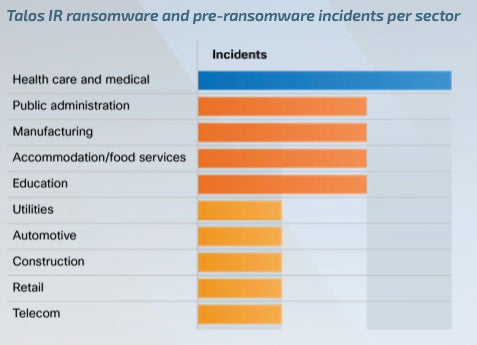
Some ransomware groups have been changingThe most active ransomware group for the second year in a row was LockBit (25.3% of the total number of posts made to data leak sites), followed by ALPHV (10.7%) and Clop (8.2%). Yet some ransomware groups kept changing in 2023; those structures often merged or rebranded in an attempt to confuse law enforcement and researchers tracking them. The cybercriminals active in the field often work for several ransomware-as-a-service services at the same time. Multiple leaks of ransomware source code and builders also affected the ransomware threat landscape because these allowed more people (even those with little technical knowledge) to start their own operations. Zero-days exploited at an unprecedented paceHighly technical actors have been exploiting zero-day vulnerabilities at an unprecedented pace. The Clop ransomware group in particular has been able to exploit multiple zero-day vulnerabilities, including vulnerabilities in the GoAnywhere MFT platform, MOVEit and PaperCut. Cisco Talos states that “Clop’s repeated efforts to exploit zero-day vulnerabilities is highly unusual for a ransomware group given the resources required to develop such capabilities,” yet it is still unsure that they do develop exploits on their own. When questioned about it in an email interview, a Cisco spokesperson told TechRepublic, “Because of the murkiness in the relationships that constitute the ransomware ecosystem, it can be difficult to accurately parse out which personnel/organizations are responsible for which actions. Because of this, we do not have direct insight into how Cl0p obtained the 0days and have not observed any indications that they purchased them. Regardless of whether they developed them themselves or purchased them, the usage suggests Cl0p is well-resourced, either in engineering talent or in finances and connections that would allow them to obtain from a third party.” More affiliates are using a data theft extortion modelAnother remarkable shift in the ransomware threat landscape is that more affiliates are now switching to a data theft extortion model rather than the usual encryption model. In these attacks, cybercriminals do not deploy ransomware; instead, they steal organizations’ sensitive information before asking for a ransom. The improvements in ransomware detection capabilities from Endpoint Detection and Response and Extended Detection and Response software might be one reason for switching tactics and stopping deploying ransomware on the targeted systems. Cisco Talos also suspects the aggressive pursuits from U.S. and international law enforcement against ransomware actors might be another reason for that change. Network infrastructure attacks increasedCisco Talos observed an increase in attacks on networking devices in 2023, particularly attacks operated by China- and Russia-based groups looking to advance espionage objectives and facilitate stealthy operations against secondary targets. The researchers observed such activity from other cybercriminals, including initial access brokers and ransomware threat actors. Weak security on network devicesNetworking devices, although being key components to any organization’s IT infrastructure, are not often examined from a security point of view and are often poorly patched, making them an interesting target for cybercriminals. Yet those devices often run on non-standard operating systems, rendering their exploitation harder by cybercriminals but also unmonitored by standard security solutions. The typical compromise of those devices starts with threat actors exploiting unpatched vulnerabilities, weak or default credentials, or insecure device configuration. A Cisco spokesman told TechRepublic that “the continued prevalence of default credentials may be partly explained by the sheer number of vendors and products combined with the lack of uniform standards/best practices. The move away from default credentials should certainly help Boost the situation. It is important to note that weak credentials can also be exploited if the actor is able to brute-force or password-spray, and that access brokers still achieve success in obtaining credentials and selling them on the dark web. This means that even if organizations are not using default credentials, it’s essential they create unique and complex passwords, employ MFA where possible, and emphasize additional security measures such as segmentation and IR planning as well.” Targeted devices had a high severity scoreVulnerabilities affecting network devices in 2023 all had a high severity score, meaning those devices were easily exploitable and had the potential to cause significant operational impact, according to Cisco Talos. Once compromised, those devices allow attackers to capture sensitive network information, facilitating further access to the target’s networks. Attackers also might plant malware on the devices to establish an initial foothold in the target’s infrastructure without the need for any authentication, or to redirect network traffic to actor-controlled servers. Finally, the devices are also often used by attackers as anonymization proxies for conducting attacks on other targets. Commodity loader malware evolvedCommodity loader malware such as Qakbot, Ursnif, Emotet, Trickbot and IcedID have been around for years. They were initially banking trojans, looking for credit card information theft on infected computers. In late 2023, new variants of IcedID and Ursnif appeared with a striking difference as compared to their older versions: Their banking trojan capabilities had been removed, and their dropper functionalities had been improved. The IcedID new samples have been used by initial access brokers known for commonly selling network accesses to ransomware groups. The latest Ursnif variants were used by the Royal ransomware group. Qakbot also evolved, deploying new features ideally suited to help ransomware groups. This evolution from banking trojan to loader is attractive for cybercriminals who want to be stealthier; the banking trojan function removal renders those malware less detectable. The infecting vector for Qakbot, IcedID and Ursnif evolved, as Microsoft’s new security measures on Office products affected the malware threat landscape, forcing cybercriminals to find new ways to use macros undetected or avoid using them completely (Figure B). Figure B 
Threat actors used different methods compared to previous years for spreading their malware and infecting devices, such as using JavaScript, PowerShell, OneNote documents, or HTA files, to name a few. They also used the Google Ads platform to deploy malware such as Ursnif, IcedID or Trickbot, fully avoiding macros. Some other threat actors deploying Emotet, IcedID and Ursnif have been observed using older methods with macros, probably because the success rate on unpatched enterprise legacy systems is still high. How to protect your business from these cybersecurity threatsThe threat landscape evolves to suit cybercriminals’ needs, and your security team needs to ensure its mitigation strategies are keeping up with the trends. Here are some tips for securing your business from these cyberthreats. In addition, all operating systems and software must be up to date and patched to avoid being compromised by common vulnerabilities. RansomwareAccess control mechanisms should be carefully reviewed in all corporate environments, and data segmentation should be applied for storing sensitive data because ransomware threat actors are increasingly trying to steal sensitive data rather than encrypt it. Network devicesNetwork devices must be up to date and patched. Default passwords, if any, must be changed to strong passwords. All of the devices’ configuration files should be carefully analyzed and tuned to avoid any malicious exploitation. When possible, multifactor authentication must be deployed on those devices. Also, inbound and outbound communications from the devices should be monitored to detect malicious communication. Commodity loadersThe main families of commodity loaders have dropped their banking trojan capabilities to be lighter and stealthier, even without using macros — often to facilitate ransomware operations. Organizations should educate their employees to handle more file types with caution, such as PDF files or ZIP archives that might contain malicious files. Disclosure: I work for Trend Micro, but the views expressed in this article are mine. Published 12-28-23 Submitted by Cisco Systems, Inc. 
We released our annual Purpose Report, which reflects and celebrates the past year’s work towards Powering an Inclusive Future for All—the progress we’ve made against our goals, and the people and lives we’ve touched. The report explores the theme, The Power of Purpose, because we recognize that when we intersect our business, technology, and a network of partners together with our purpose, we create a powerful force for lasting change. And we have some incredible examples from this year, including the announcement that we achieved our goal of positively impacting 1 billion lives, and did so over a year early! For many years, the purpose of our Purpose Report has been to look back. But we must also look ahead. Any company looking to successfully execute their business strategy must consider the changing terrain, identify upcoming challenges and trends, and anticipate how to best meet evolving requirements. The same is true for purpose. This year’s Purpose Report begins to explore the landscape, and where we see opportunities for Purpose to grow. Our biggest challenges are interconnected and interdependent The past several years brought us all unprecedented challenges, and a world more prone to polarization than before. But instead of binary questions and issues, a more multipolar world has emerged, requiring us to operate with more nuance and greater context than ever. In this context one thing is clear—we are more interconnected and interdependent than ever. Our lives and futures are linked by our shared dependence on our planet and its environments. We have a global responsibility to solve the climate crisis together. We see the growth of an increasingly digital and global economy, keeping us connected through ecosystems of financial interdependence. And as we learned in the exact pandemic, our collective health is also inextricably linked. Global crises also continue to grow increasingly interconnected––and the consequences disproportionately fall on vulnerable communities. Developing nations who often contribute the least to climate change bear the brunt of its impact. And due to a lack of infrastructure and technological advancement, they are often the least equipped to respond to natural disasters. While the digital economy continues to grow, 2.6 billion people remain unconnected, denying them access to the opportunities and resources available. The consequences of each crisis exacerbate others—access to education is disrupted, progress for women and girls is set back, and extreme poverty rates rise. Pursuing our Purpose can and must be the glue that brings us together to meet this moment and address these complex, interconnected issues. The question we must continue to ask as we look ahead is, how? This year’s report reflects on how—how we achieved our goal of positively impacting 1 billion lives, how the private sector can work in new ways to address critical issues facing our societies, and how we can apply lessons from the past to build resilience in our communities for the future. Where do we go from here? There is no doubt that the path forward for business in a multipolar world isn’t entirely clear. There is significant work ahead to address risks in supply chains and manufacturing, and complex questions on how to best navigate a shifting geopolitical terrain. But should these challenges and uncertainties also apply to Purpose? I don’t think so. In fact, in this moment when many are shying away from a global mindset and approach, our Purpose work proceeds by pursuing what is most meaningful, regardless if that is at the local or global level. Purpose can flex. It operates in a lane that is valued around the world, giving all of us who do this work the space to create and iterate, to sway and pivot, and find our rhythm. And when we do, pursuing our Purpose holds the door open for economic initiatives. As we close the year in which we reached a goal of positively impacting one billion people, I’m looking ahead and considering the next goal we’ll set for ourselves. We are stronger with our partners by our side—an ecosystem focused on driving impact. We’ll continue to do this if we integrate the lessons of the past and take a new approach in the days and years ahead. I hope you’ll join us on this journey and read about our impact this year, and my reflections on what’s next, in our FY23 Purpose Report. Together, we can do good for our communities, good for our businesses, and good for all. Read the full Cisco FY23 Purpose Report View original content here. Earning specialized certifications is a surefire way to advance your career in the IT field, regardless of industry or current career level. The right certification validates your skills and knowledge, which makes you more desirable to future employers who want to attract and retain the best employees. Below, we’ll explore the top IT certifications and share how to examine your goals to choose the right path forward. We’ve narrowed IT certifications into specific categories to help IT professionals assess what’s available and pursue the best certifications to show their willingness to learn and develop the in-demand career skills employers want. Best database certificationsÂDatabase platforms have changed greatly over the years, but database technology remains important for various applications and computing tasks. Available certifications for IT professionals include those for database administrators (DBAs), database developers, data analysts and architects, business intelligence, and data warehousing specialists, and other data professionals. Obtaining database certifications demonstrates an understanding of database concepts, design, implementation, administration and security. This can boost your credibility in the job market and show potential employers that you have the skills needed to work with databases. The best database certifications include the following: Best SAS certificationsÂSAS is one of the world’s leading firms for business analytics, data warehousing and data mining. Today, the SAS Global Certification Program offers 23 credentials across categories including foundation tools, advanced analytics, business intelligence, data management and administration. SAS programmers remain in high demand, with a quick search of job boards showing thousands of open positions. Obtaining SAS certification shows employers that you are proficient in the company’s popular suite of tools. Some of SAS’s certification programs include the following: Many professionals earn certifications to help navigate their career paths. According to the IT Salary Report, 92 percent of information technology professionals have at least one certification. Best Cisco certificationsÂCisco Systems is a market leader not only in networking and communications products, but also storage networking and solutions for data centers. Cisco offers a variety of certifications for IT professionals, ranging from entry level credentials to expert-level exams. These certifications prepare professionals for Cisco-related careers. A search of job boards reveals thousands of open positions for Cisco experts, underscoring the continued relevance of these skills. Some of Cisco’s certifications include the following: Best Dell certificationsÂDell Technologies remains one of the world’s leading computing companies. In addition to its well-known hardware lineup, Dell also offers solutions for networks, storage, servers, gateways and embedded computing, as well as a broad range of IT and business services. Becoming certified in Dell products can help make IT professionals competitive in engineering roles for server, virtualization, networking, systems, integration and data security. Additional roles include consultants, account executives, system administrators, IT managers and deployment managers. Best mobility certificationsÂIn the mobile era, it has become increasingly important for network engineers to support local, remote and mobile users, as well as provide proper infrastructure. The focus on application and app development now leans more toward mobile environments, requiring security professionals to thoroughly address mobility from all perspectives. Due to the fast-changing nature of mobile technology, not many mobility certifications have become widely adopted. However, a few of the top mobility certifications can help IT professionals stand out in this rapidly evolving field. If part of your job includes selling and implementing an IT solution, you may want to pursue the best sales certifications. You’ll show your organization that you’re willing to go above and beyond to reach sales targets. Best computer hardware certificationsÂAs remote and computer-based work has become more common, it’s more important than ever that businesses and individuals be able to maintain their hardware. While discussions about potential computer-related jobs often revolve around software work and coding, jumping into the IT field by becoming a computer technician is an excellent starting point. Today, thousands of hardware technician jobs are available across the country. Entering this industry becomes more accessible for those who acquire computer hardware certifications. These certifications can showcase your expertise and proficiency in the upkeep of computers, mobile devices, printers and other hardware components. Best Google Cloud certificationsÂIT pros with solid cloud computing skills continue to be in high demand as more companies adopt cloud technologies. Today, Google Cloud is one of the market leaders in the cloud computing space. Regardless of where you are in your IT career, engaging with certification programs can demonstrate your willingness to keep on top of rapidly evolving cloud technologies. To that end, Google has introduced a host of certifications for its cloud platform, including the following: Best evergreen IT certificationsIn the fast-changing world of technology, it can help to focus on certifications that have stood the test of time. “Evergreen” refers to certifications that remain popular year after year. The top evergreen certifications are based on exact pay surveys in IT, reports from IT professionals about certifications they want or pursue the most, and those that appear most frequently in online job postings. Obtaining these credentials is one step toward ensuring that your skills remain relevant for a long time: Best IT governance certificationsÂIT governance provides structure for aligning a company’s IT with its business strategies. Organizations faced with compliance rigors always need experienced IT pros who can see the big picture and understand technology risks. This means certified IT governance professionals are likely to remain in high demand. Earning one of the following certifications proves a commitment to understanding the role of IT governance and its position in a company’s current and future success. Getting certified can validate your expert knowledge and lead to advanced career opportunities. Best system administrator certificationsÂAn IT system administrator is responsible for managing and maintaining the information technology infrastructure within an organization. The position demands sought-after career skills, ranging from configuring and maintaining servers and clients to managing access controls, network services, and addressing application resource requirements. If you’re in charge of managing modern servers, there’s a long list of tools and technologies that system administrators must master. Obtaining some of the most prominent system administrator certifications can demonstrate your mastery to potential employers. Best ITIL certificationsÂITIL, or Information Technology Infrastructure Library, was developed to establish standardized best practices for IT services within government agencies. Over the ensuing four decades, businesses of all types embraced, modified, and extended ITIL, shaping it into a comprehensive framework for managing IT service delivery. The ITIL framework remains the benchmark for best practices in IT service and delivery management, offering certification programs that cater to IT professionals at all levels. These training and certification courses ensure that IT professionals stay well-prepared for the ongoing evolution in IT service delivery management. There are four certifications in the ITIL certification program: Best enterprise architect certificationsÂAn IT enterprise architect is responsible for designing and managing the overall structure and framework of an organization’s information technology system. Enterprise architect certifications are among the highest that an IT professional can achieve; fewer than 1 percent ultimately reach this level. Enterprise architects are among the highest-paid employees and consultants in the tech industry. These certifications can put IT professionals on a path to many lucrative positions. The average worker earns over six figures annually. Some top enterprise architect certifications are listed below: To become an enterprise IT architect, you’ll need knowledge of systems deployment, design and architecture, as well as a strong business foundation. Best CompTIA certificationsCompTIA is a nonprofit trade association made up of more than 2,000 member organizations and 3,000 business partners. The organization’s vendor-neutral certification program is one of the best recognized in the IT industry. Since CompTIA developed its A+ credential in 1993, it has issued more than two million certifications. CompTIA certifications are grouped by skill set and focus on the real-world skills IT professionals need. Armed with these credentials, you can demonstrate that you know how to manage and support IT infrastructure. Best Oracle certificationsÂA longtime leader in database software, Oracle also offers cloud solutions, servers, engineered systems, storage, and more. The company has more than 430,000 customers in 175 countries. Today, Oracle’s training program offers six certification levels that span 16 product categories with more than 200 individual credentials. Considering the depth and breadth of this program — and the number of Oracle customers — it’s no surprise that Oracle certifications are highly sought after. Vendor-specific certifications address a particular vendor’s hardware and software. For example, you can pursue Oracle certifications and Dell certifications to become an expert in those companies’ environments. Best business continuity and disaster recovery certificationsBusiness continuity and disaster recovery keep systems running and data available in the event of interruptions or faults. These programs bring systems back to normal operation after a disaster has occurred. Business continuity and disaster recovery certifications are seeing a healthy uptrend as new cloud-based tools grow in popularity. While business continuity planning and disaster recovery planning have always been essential, they’re becoming more critical than ever — and IT certifications are following suit. The exploitation of a vulnerability in Progress Software’s MOVEit file transfer application was one of the biggest cybersecurity news headlines of the year. However, according to Cisco Systems, the most targeted vulnerabilities this year — as in previous years — were older security flaws in common applications. That again underscores the preference of threat actors to target unpatched systems that can cause major disruptions, Cisco’s Talos threat intelligence division said in its annual Year in Review report. In many cases, the vulnerabilities were more than 10 years old, giving users lots of time for them to have been patched. In fact, four of the top five most targeted vulnerabilities were also cited by the U.S. Cybersecurity and Infrastructure Security Agency (CISA) as being frequently exploited in prior years. The top 10 targeted vulnerabilities were –CVE-2017-01999, found in Microsoft Office and WordPad; Most of the vulnerabilities would cause substantial impact if exploited, the report notes, with seven receiving the highest “critical” score from the Common Vulnerability Scoring System (CVSS). Ransomware continued to threaten enterprises globally in 2023, the report notes, with LockBit remaining the top threat in this space for the second year in a row. Healthcare was the top targeted industry this year, as adversaries maintained their focus on entities that have cybersecurity funding constraints and low downtime tolerance. However, some ransomware groups such as Clop/Cl0p — behind the MOVEit exploits — deployed a collection of zero-day exploits, behavior usually associated with advanced persistent threat (APT) activity, the report says. A new trend of ransomware actors turning to pure extortion, skipping encryption altogether while threatening to leak sensitive data, also emerged. At the same time, the report adds, leaked ransomware source code allowed low-skilled actors to enter the market. One other point the report notes: The use of valid accounts was consistently a top weakness in Talos incident response engagements. | ||||||||
500-901 benefits | 500-901 test format | 500-901 test success | 500-901 study help | 500-901 test Questions | 500-901 Study Guide | 500-901 Topics | 500-901 Practice Test | 500-901 information source | 500-901 pdf | | ||||||||
Killexams test Simulator Killexams Questions and Answers Killexams Exams List Search Exams |








